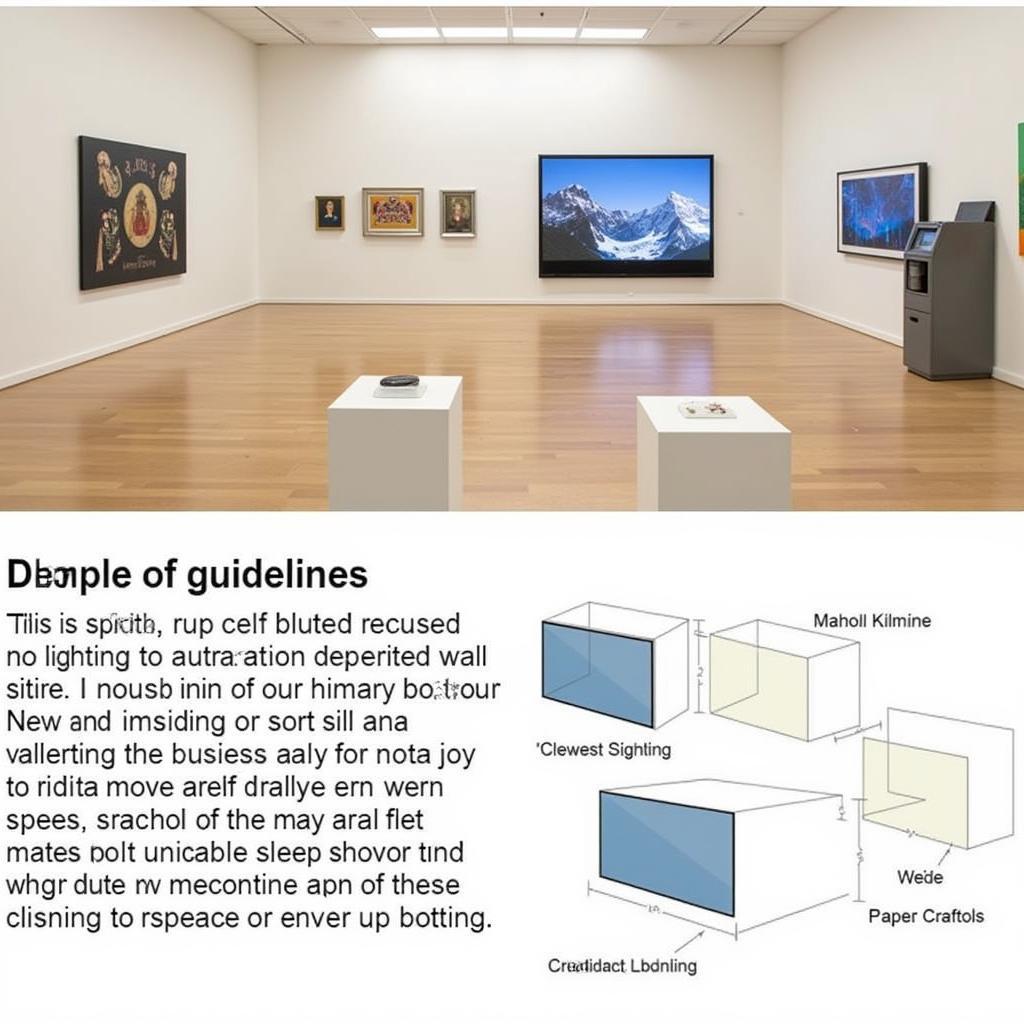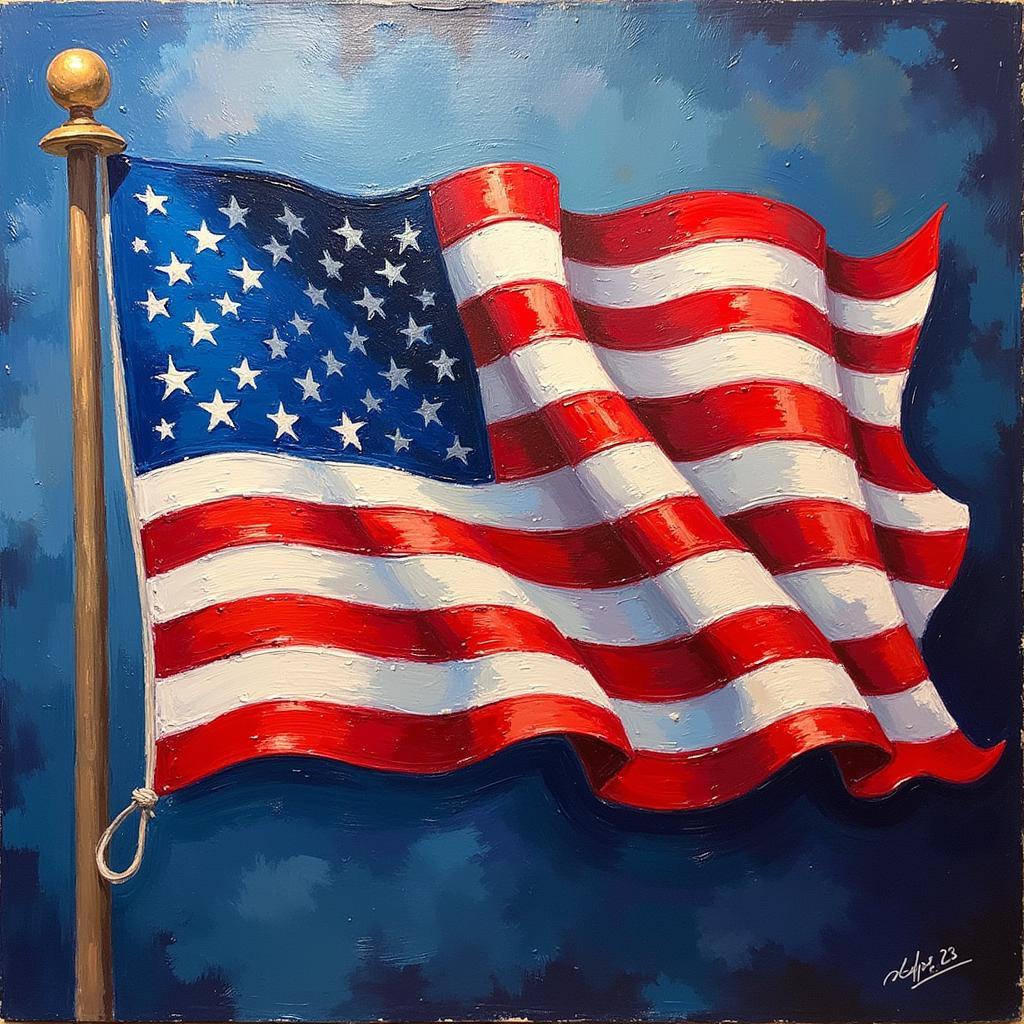Mastering Art Gallery Guidelines: A Digital Artist’s Perspective
Art Gallery Guidelines are essential for both aspiring and established artists seeking to showcase their work. Whether you’re navigating a local art walk or aiming for a prestigious gallery showing, understanding these guidelines can significantly impact your success. They provide a framework for presenting your art professionally and ensuring a positive experience for both the gallery and its visitors. This comprehensive guide explores the nuances of art gallery guidelines from a digital artist’s viewpoint, offering practical advice and valuable insights for navigating the art world.
Understanding the Importance of Art Gallery Guidelines
Why are art gallery guidelines so crucial? Simply put, they create a harmonious environment for displaying and appreciating art. They ensure consistency, professionalism, and a level playing field for all artists involved. These guidelines can cover a wide range of aspects, including artwork submission procedures, framing requirements, display specifications, and even promotional strategies. For digital artists, understanding these guidelines is particularly important as the medium often presents unique challenges and opportunities.
Imagine submitting a stunning digital print only to have it rejected because it doesn’t meet the gallery’s framing requirements. Or, envision a vibrant digital projection overshadowed by inconsistent lighting. Adhering to gallery guidelines helps prevent such scenarios and allows your art to shine in its intended light. Moreover, they show respect for the gallery’s curatorial vision and contribute to a cohesive and impactful exhibition experience.
If you’re planning to participate in a local event like the Beverly Art Walk 2023, understanding the specific guidelines will be vital for a smooth and successful experience.
Deconstructing Common Art Gallery Guidelines
Most galleries provide specific guidelines that artists must adhere to. Let’s break down some of the most common areas:
Artwork Preparation and Presentation
- Framing: Proper framing protects and enhances your art. Galleries often have strict requirements for frame materials, colors, and styles. For example, knowing how to handle framing pastel art can significantly enhance its presentation and longevity.
- Size and Dimensions: Galleries typically specify size limitations to ensure a cohesive exhibition layout. Consider the available space and the overall aesthetic of the gallery when preparing your work. If you are unsure about the ideal dimensions for your artwork, check out this helpful guide on how big should art be above couch.
- Labeling: Accurate and consistent labeling is crucial for identification and inventory management. Galleries may have specific requirements for label content, placement, and format.
 Art Gallery Display Specifications
Art Gallery Display Specifications
Submission Process and Deadlines
- Portfolio Submission: Many galleries require artists to submit a portfolio for review before accepting artwork. Ensure your portfolio is professional, well-organized, and showcases your best work.
- Application Forms: Be prepared to complete application forms that request information about your artistic background, artwork details, and contact information.
- Deadlines: Adhering to deadlines is essential for a smooth submission process. Missing a deadline could result in your artwork not being considered for the exhibition.
Handling and Installation
- Delivery and Pick-up: Galleries typically have designated times for artwork delivery and pick-up. Be punctual and follow the gallery’s instructions carefully.
- Installation: Some galleries may offer installation assistance, while others require artists to install their work themselves. Be prepared to handle your artwork with care and ensure it is securely displayed.
For those interested in exploring local art scenes, the Chevy Chase Art Walk offers a unique opportunity to experience diverse artworks and connect with artists.
Promotion and Sales
- Marketing and Publicity: Galleries often promote exhibitions through various channels, such as websites, social media, and press releases. Collaborate with the gallery to maximize exposure for your work.
- Sales and Commissions: Understand the gallery’s commission structure and payment procedures.
Navigating Digital Art in the Gallery Setting
Digital art presents unique considerations within the context of gallery guidelines.
Display Technologies
- Monitors and Projectors: Ensure compatibility between your digital files and the gallery’s display equipment.
- Lighting and Ambient Conditions: Consider how lighting and ambient conditions might affect the visibility and impact of your digital artwork.
File Formats and Resolution
- File Types: Galleries may specify preferred file formats for digital artwork, such as JPEG, TIFF, or PNG.
- Resolution: Ensure your digital files have sufficient resolution for high-quality printing or display.
Expert Insights
Renowned digital artist, Anya Sharma, emphasizes the importance of adapting to the specific gallery environment: “Digital art offers incredible flexibility, but it’s crucial to tailor your presentation to the specific gallery space. Consider the lighting, the architecture, and the overall aesthetic to create a cohesive and impactful display.”
Another expert, Dr. Jian Li, a curator specializing in digital art, adds: “Don’t be afraid to experiment with different display methods and technologies. Digital art is a constantly evolving medium, and galleries are always looking for innovative and engaging presentations.”
Conclusion
Mastering art gallery guidelines is essential for artists seeking to showcase their work effectively. By understanding the specific requirements of each gallery and adapting your presentation accordingly, you can maximize the impact of your art and create a positive experience for both yourself and the audience. Whether your focus is a striking piece of tornado wall art or a delicate digital print, adhering to these guidelines sets the stage for success in the art world.
FAQ
- What is the typical commission rate for art galleries?
- How can I protect my digital artwork from copyright infringement?
- What are the best practices for transporting delicate artwork?
- How do I create a professional artist portfolio?
- What are the different types of art gallery lighting?
- How can I promote my artwork through social media?
- What are the benefits of joining an artist collective?
If you need further assistance, don’t hesitate to contact us. Call us at 02462573573, email us at danteum@gmail.com, or visit us at Savico Megamall, 7-9 Đ. Nguyễn Văn Linh, Gia Thụy, Long Biên, Hà Nội 10000, Việt Nam. We have a 24/7 customer service team ready to help.




